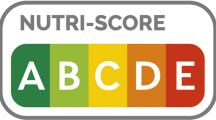Abstract
Multi-agents techniques allow for designing distributed applications where different stakeholders collaborate or compete to achieve their own goals. Intelligent agents have to react to their perceptions and take decision according to their knowledge and their preferences. In complex applications agents have to take into account different criteria, whose relevance and priority depend on their preferences and desires. So the problem is how to measure the importance of these criteria and how to combine these values in order to evaluate and choose among the available decisions. In this paper a multi-criteria decision-aid has been used to model a general solution for this kind of problems. Hence the model is specialized in three different application scenarios to implement a multi agents software solution.






Similar content being viewed by others
Explore related subjects
Discover the latest articles, news and stories from top researchers in related subjects.References
Amato A, Di Martino B, Venticinque S (2012a) 2012 4th International Conference on Intelligent Networking and Collaborative Systems (INCoS). In: IEEE (The Institute of Electrical and Electronics, Piscataway, NJ (USA)-USA, chap A Semantic Framework for Delivery of Context-Aware Ubiquitous Services in Pervasive Environments, pp 412–419
Amato A, Liccardo L, Rak M, Venticinque S (2012b) Sla negotiation and brokering for sky computing. In: CLOSER, pp 611–620
Amato F, Chianese A, Moscato V, Picariello A, Sperli G (2012c) Snops: a smart environment for cultural heritage applications, pp 49–56
Andrè F, Cardenete M, Romero C (2010) Basic aspects of the multiple criteria decision making paradigm. In: Designing public policies. Lecture notes in economics and mathematical systems, vol 642. Springer, Berlin, pp 33–53
Armesh H (2010) Decision making. In: Proceedings of the 12th International Business Research Conference, World Business Institute, Melbourne, Australia, pp 11–21
Aversa R, Di Martino B, Mazzocca N, Venticinque S (2004) High performance computing: paradigm and infrastructure. chap A Hierarchical distributed shared memory Parallel Branch & Bound Application with Pvm and OpenMP for multiprocessor clusters. Wiley, New York
Chen SJ, Hwang CL, Hwang FP (1992) Fuzzy multiple attribute decision making: methods and applications in Collaboration with Dr. Frank P. Hwang. In: Lecture notes in economics and mathematical systems. Springer, Berlin
Gasser L (2001) Mas infrastructure: definitions, needs and prospects. In: Revised Papers from the International Workshop on Infrastructure for Multi-Agent Systems: Infrastructure for Agents, Multi-Agent Systems, and Scalable Multi-Agent Systems. Springer, London, pp 1–11
Metsch T, Edmonds A, Nyren R (2011) Open cloud computing interface—core and models. In: Standards Track, no. GFD-R in The Open Grid Forum Document Series. The Open Grid Forum Document Series, Muncie
Murphy P, Enis B (1986) Classifying products strategically. J Mark 50(3):24–42
Salton G, Lesk ME (1968) Computer evaluation of indexing and text processing. J ACM 15(1):8–36. doi:10.1145/321439.321441
Sindhav B, Balazs AL (1999) A model of factors affecting the growth of retailing on the internet. J Mark Focus Manag 4:319–339
Theilmann W (2011) Sla@soi. http://sla-at-soi.eu/
Triantaphyllou E, Shu B, Nieto Sanchez S, Ray T (1999) Multi-criteria decision making: an operations research approach, vol 15. Wiley, New York, pp 175–186
Venticinque S (2012) European Research Activities in Cloud Computing, Cambridge Scholars, chap Agent Based Services for Negotiation, Monitoring and Reconfiguration of Cloud Resources, pp 178–202
Venticinque S, Amato A, Di Martino B (2012) Semantically augmented exploitation of pervasive environments by intelligent agents. In: 2012 10th IEEE international symposium on parallel and distributed processing with applications. IEEE Computer Society, USA, pp 807–814
Zimmermann HJ (1991) Fuzzy set theory and its applications. 2nd edn, Kluwer Academic Publishers, Norwell
Acknowledgments
This work has been supported by PRIST 2009, Fruizione assistita e context aware di siti archelogici complessi mediante terminali mobile, founded by Second University of Naples.
Author information
Authors and Affiliations
Corresponding author
Rights and permissions
About this article
Cite this article
Amato, A., Di Martino, B. & Venticinque, S. Agents based multi-criteria decision-aid. J Ambient Intell Human Comput 5, 747–758 (2014). https://doi.org/10.1007/s12652-013-0190-y
Received:
Accepted:
Published:
Issue Date:
DOI: https://doi.org/10.1007/s12652-013-0190-y




